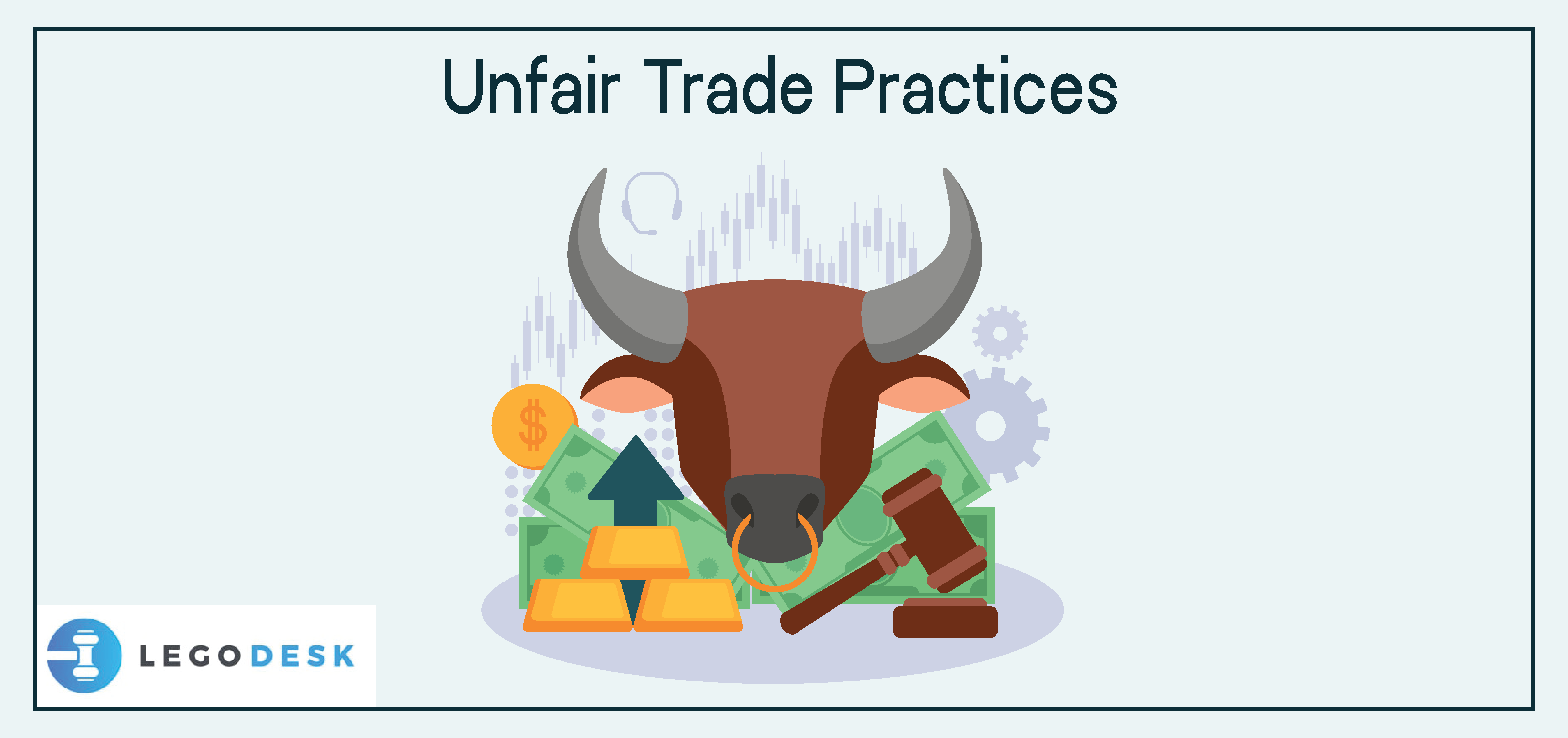
Introduction To Unfair Trade Practices
Oxford dictionary defines the word ‘unfair’ as something that is not fair or just. Similarly, the term ‘Unfair trade practices’ encompasses a broad range of torts carried out by acts of deception or wrongful conduct. Unfair trade practices can happen in any line of business but it is found mostly in cases of intellectual property. Examples include trade secret misappropriation, unfair competition, false and misleading advertisements, dilution and disparagement.
The World Bank and the Organisation for Economic Cooperation and Development (OECD) Model Law, enumerate the following to be unfair trade practices –
a) Firstly, the distribution of false and misleading information that can potentially harm the business interests of another firm.
b) Secondly, the distribution of false or misleading information to consumers, which includes distribution of information lacking a reasonable basis, related to the price, character, method or place of production, properties, and suitability for use, or quality of goods; false or misleading comparison of goods in the process of advertising.
c) Thirdly, fraudulent use of a trademark, firm name, labeling of product or packaging.
d) Fourthly, unauthorized receipt and leak of confidential information related to business or trade.
Position Of Unfair Trade Practices in India
In India, the term ‘unfair trade practice’ has been defined under Section 2(1)(r) of the Consumer Protection Act, 1986. It reads as –
“unfair trade practice” means a trade practice which, for the purpose of promoting the sale, use or supply of any goods or for the provision of any service, adopts any unfair method or unfair or deceptive practice including any of the following practices, namely;—
(1) the practice of making any statement, whether orally or in writing or by visible representation which,—
(i) falsely represents that the goods are of a particular standard, quality, quantity, grade, composition, style or model;
it refers to the false representation that goods possess a standard quality, quantity, grade, style or model.
(ii) falsely represents that the services are of a particular standard, quality or grade;
it refers to the false representation that services contain a particular standard, quality or a grade.
(iii) falsely represents any re-built, second-hand, renovated, reconditioned or old goods as new goods;
it refers to the false representation of old goods as new goods.
(iv) represents that the goods or services have sponsorship, approval, performance, characteristics, accessories, uses or benefits which such goods or services do not have;
it refers to the representation of goods or services have benefits which in reality such goods or services do not have.
(v) represents that the seller or the supplier has a sponsorship or approval or affiliation which such seller or supplier does not have;
the representation that the seller or the supplier has sponsorship, approval or affiliation which the seller or the supplier does not have.
(vi) makes a false or misleading representation concerning the need for, or the usefulness of, any goods or services;
it refers to the false or misleading representation relating to the usefulness of goods or services.
(vii) gives to the public any warranty or guarantee of the performance, efficacy or length of life of a product or of any goods that are not based on an adequate or proper test thereof;
it refers to assuring the public any kind of warranty or guarantee related to the performance, efficiency or life of a product or of any goods that aren’t based on an adequate or proper examination.
In 1969, the Monopolies and Restrictive Trade Practices Act, 1969 came into effect. The main motive behind this legislation was to categories ‘unfair trade practices’ into fixed categories. Section 36A of the Act deems the following to be unfair –
36 A (1): False representation of products or services, including false description, guarantee, warranty or performance of a product or service.
36 A (2): The Advertisement of false bargain price.
36 A (3): Contests, lotteries, games of chance or skill for promotion of the sale.
36 A (4): Selling goods not in conformity with the law.
36 A (5): Hoarding, destruction, refusal to sell the goods.
Also, unfair trade practice must cause some “loss or injury” to the consumer.
The problem with these fixed, water-tight compartments of unfair trade practices was that it was too narrow and not enough to curb the human minds who could invent new methods of unfair trade via scientific and technological advancement.
Due to this, in the case of Society for Civic Rights v. Colgate Palmolive India (Pvt.) Ltd., the apex court was of the view that the phrase “and thereby causes loss or injury to the consumers of such goods and services” is of an implied nature and it is not mandatory for actual loss or damage to happen. Mere unfair trade practice as outlined under Section 36A is enough to prove injury or loss.
Conclusion
Carrying out trade or business is one’s fundamental right to freedom as envisaged under Article 19 of the Constitution of India. However, trade and business must be a fair game and hence must be open to all. No business must infringe the rights of another by any means as mentioned above in the two acts.

